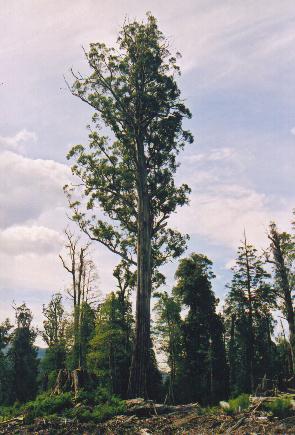
Ground beetles are a large, cosmopolitan family of beetles, the Carabidae, with more than 40,000 species worldwide, around 2,000 of which are found in North America and 2,700 in Europe. As of 2015, it is one of the 10 most species-rich animal families. They belong to the Adephaga. Members of the family are primarily carnivorous, but some members are herbivorous or omnivorous.

A bark beetle is the common name for the subfamily of beetles Scolytinae. Previously, this was considered a distinct family (Scolytidae), but is now understood to be a specialized clade of the "true weevil" family (Curculionidae). Although the term "bark beetle" refers to the fact that many species feed in the inner bark (phloem) layer of trees, the subfamily also has many species with other lifestyles, including some that bore into wood, feed in fruit and seeds, or tunnel into herbaceous plants. Well-known species are members of the type genus Scolytus, namely the European elm bark beetle S. multistriatus and the large elm bark beetle S. scolytus, which like the American elm bark beetle Hylurgopinus rufipes, transmit Dutch elm disease fungi (Ophiostoma). The mountain pine beetle Dendroctonus ponderosae, southern pine beetle Dendroctonus frontalis, and their near relatives are major pests of conifer forests in North America. A similarly aggressive species in Europe is the spruce ips Ips typographus. A tiny bark beetle, the coffee berry borer, Hypothenemus hampei is a major pest on coffee plantations around the world.

The mountain pine beetle is a species of bark beetle native to the forests of western North America from Mexico to central British Columbia. It has a hard black exoskeleton, and measures approximately 5 millimetres, about the size of a grain of rice.
A cucumber is an edible vegetable.

The American elm cultivar Ulmus americana 'Brandon' was raised by Lacombe Nurseries Lacombe, Alberta, Canada, before 1969; it may be synonymous with another cultivar from the same source known as 'Patmore', selected and raised by R. H. Patmore from a native tree in Brandon, Manitoba.
The Chinese Elm cultivar Ulmus parvifolia 'Burgundy' was selected for its autumn foliage by Dr Michael Dirr and A. E. Richards from a tree on the University of Georgia campus, and first described in 1990.

Ulmus parvifolia 'Emer II' or 'Emerald Vase' is a Chinese Elm cultivar selected by Dr. Michael A. Dirr and cloned in the late 1980s from a tree planted circa 1910 on the University of Georgia campus at Athens, that had survived ice-storms undamaged. It was patented in 1991.
The Chinese Elm cultivar Ulmus parvifolia 'Emer I' or 'Emerald Isle' was cloned from a tree planted circa 1920 on the University of Georgia campus at Athens.

The de Prunner's ringlet is a member of the subfamily Satyrinae of the family Nymphalidae.

Centurion is the name given to a single Eucalyptus regnans tree growing in Southern Tasmania, Australia, and the world's tallest known Eucalyptus. The tree was first measured by climber-deployed tapeline at 99.6 metres (327 ft) tall in 2008, and was subsequently re-measured to be 100.5 metres (330 ft) tall by ground laser in 2018. This discovery places E. regnans as the third-tallest tree species in the world after the coast redwood and the Himalayan cypress, and taller than both the Sitka spruce and Coastal Douglas Fir. It was discovered in August 2008 by employees of Forestry Tasmania while analysing the data collected by LiDAR system used in mapping and assessment of state forest resources.
The Triarius, a tree, is a very large Eucalyptus regnans that is located in southern Tasmania, Australia. In 2010 the tree was estimated to be 86.5 metres (284 ft) tall, its diameter was 3.9 metres (13 ft), and the volume of the trunk was 219 cubic metres (7,700 cu ft).

El Grande was a massive Eucalyptus in Tasmania and Australia's largest tree. It was located on a ridge in the upper Derwent valley, adjacent to the World Heritage Area of the Florentine Valley, approximately 100 kilometres (62 mi) from Hobart. The tree stood 79 metres (259 ft) in height, had a girth of 19 metres (62 ft), and a volume of 439 cubic metres. While it was not the tallest tree in Australia, it was considered to be the largest in terms of volume, and the world's biggest-stemmed flowering plant.
Triarius lividus is a species of skeletonizing leaf beetle or flea beetle in the family Chrysomelidae. It is found in Central America and North America.
Triarius is a genus of skeletonizing leaf beetles in the family Chrysomelidae. There are about seven described species in Triarius. They are found in North America and Mexico.
Triarius vittipennis is a species of skeletonizing leaf beetle in the family Chrysomelidae. It is found in North America.
Triarius trivittatus is a species of skeletonizing leaf beetle in the family Chrysomelidae. It is found in North America.
Triarius melanolomatus is a species of skeletonizing leaf beetle in the family Chrysomelidae. It is found in North America.
Triarius nigroflavus is a species of skeletonizing leaf beetle in the family Chrysomelidae. It is found in North America.
Triarius Maternus, otherwise known as Triarius Maternus Lascivius was a Roman Senator who was consul ordinarius in 185 CE with Atticus Bradua as his colleague.






